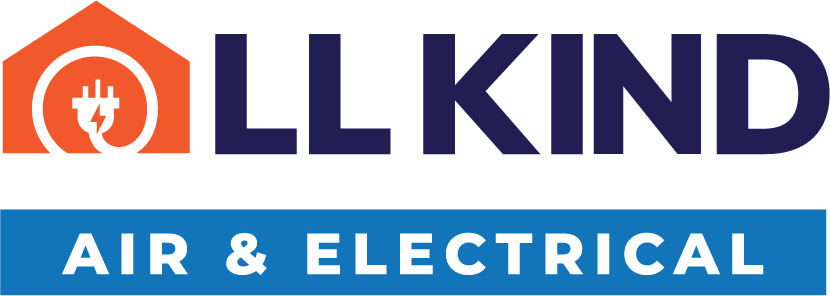Approximately 20% of Australian residential properties face challenges with gravity-based wastewater disposal, making sewer pump stations essential for efficient drainage management. When your house sits on low-lying land or has plumbing fixtures below the level of the main sewer system, gravity alone simply won’t cut it.
Sewer pump stations provide a practical solution by pumping wastewater uphill, effectively overcoming elevation barriers and ensuring proper sewage removal. Installing the right type of pump station, a domestic package system tailored to your property’s size and wastewater needs, is critical.
Correct installation ensures compliance with local environmental protection regulations and guarantees safe, reliable, and trouble-free operation over the long term.
Site Assessment and Planning for Your Sewage Pump Station
Proper site assessment and planning are essential for installing an effective sewer pump station tailored specifically to your property. Careful evaluation at this stage sets the stage for successful wastewater management.
Evaluating Site Conditions


To determine if your house requires a sewer pump station, you must first assess site elevation, slope and plumbing fixture locations. Identifying the lowest wastewater collection point at your property helps establish the necessity of installing a pump station to transport sewage or stormwater uphill towards the main sewer.
Depending on the application, this assessment may vary in complexity and depth. Consider environmental protection factors, including proximity to natural watercourses and potential contamination risks.
Additionally, stormwater considerations are critical, as incorrect placement may lead to drainage issues or flooding.
Selecting the Right Sewer Pump Stations Type
Several types of pump stations exist, each suitable for different domestic situations:
- Submersible pump stations: Ideal for residential applications, capable of handling solids and liquid waste effectively.
- Dry well stations: Suitable when regular maintenance access is required, although less common in standard domestic scenarios.
- Grinder pump stations: Recommended for properties generating significant solid waste, reducing blockage risks.
- Packaged pump stations: Offer convenience and ease of installation, combining pump, tank and controls in a single unit, reflecting technical best practice guidelines.


Consider anticipated wastewater flow, household size, and solid waste handling requirements when choosing the appropriate system.
Regulations and Approvals
The installation must fully comply with Australian Standards, particularly AS/NZS 1546.1:2008, which covers on-site wastewater systems. Before commencing work, consult local water authority regulations early to understand specific approval procedures and required permits.
Choosing the Correct Equipment for Your Sewage System
Selecting suitable equipment is critical for an efficient and environmentally responsible sewerage system. Careful decisions regarding pumps, tanks and component parts will ensure reliable transport and management of sewage at a higher level.
1. Determining Suitable Pump Capacity
Accurate pump selection begins with estimating daily wastewater volume and peak flow rates for your household. Consider the number of occupants, average water consumption and waste generation patterns. Typical domestic wastewater production ranges from 150 to 250 litres per person each day.
Allow additional capacity for peak usage events and future household expansion. Ensure your selected pump comfortably handles fluid volumes without risk of overflow or operational strain.
2. Selecting Tank Material and Size
Australian domestic sewage pump stations commonly feature robust tanks crafted from fibreglass, polyethylene, or high-density polyethylene. These materials deliver exceptional durability and corrosion resistance.
Common tank sizes include:
• 500 litres: This compact size is ideal for smaller domestic settings, greywater, or stormwater applications. It offers adjustable inlet and outlet positions.
• 700 litres: Suitable for limited-space residential installations, typically vertical underground tanks with smaller footprints.
• 1000 litres: Most popular standard domestic tank size, balancing wastewater capacity with manageable dimensions. Offers flexible inlet heights and optional alarm systems.
• 1300 litres: Ideal for larger households anticipating growth, providing increased storage capacity and efficient wastewater handling.
• 3000 to 4500 litres: Primarily septic tanks, these larger options suit combined septic and pump station use for sizeable homes requiring additional wastewater management.
Always choose tanks certified to the Australian Standard AS/NZS 1546.1, which ensures compliance with council regulations and reliable long-term performance.
3. Essential Components of a Sewer Pump Station
A fully functional station typically includes:
- Wet well (pump chamber)
- Submersible pumps (dual setup for duty and standby operation)
- Guide rails and lifting chains (Grade 316 stainless steel recommended)
- Non return and isolation valves
- Control and alarm panel
- Venting provisions ensuring proper environmental protection
Pre-assembled packages are council approved solutions offering convenience and ease of installation.
Installation Steps for Domestic Sewer Pump Stations
Proper installation of domestic sewer pump stations ensures reliable performance and prevents costly issues. Follow these detailed steps to achieve a safe and compliant setup.
1. Site Preparation and Excavation


Start excavation carefully and consider crucial clearances from boundary lines, buildings and windows. Safety and accessibility are essential, so maintain at least two metres from property boundaries and about three metres clear from windows. The operator must ensure excavation dimensions specify sufficient space to accommodate the station securely.
- Excavate area, maintaining recommended clearances
- Prepare a compact, stable and level base
- Confirm underground stability to avoid future tank shifting or failure
2. Tank and Pump Installation
Tanks are available in a range of sizes, suitable for domestic wastewater needs. Carefully lower the tank into excavation, anchoring securely in high water table areas to withstand rainfall fluctuations. Ensure inlet pipework is properly installed and sealed.
- Safely position tank into excavation
- Anchor tank as required based on groundwater conditions
- Install inlet pipework correctly
- Position submersible pumps, guide rails and lifting chains as per supplier instructions
- Fit necessary valves, including cutter valves if applicable
3. Electrical and Control Connections


Engage licensed electricians who are able to advise on appropriate controls and monitoring equipment. Locate control panels conveniently, ensuring environmental protection and accessibility for future maintenance.
- Use licensed electricians for connections
- Locate control panel conveniently and safely
- Follow Australian electrical safety standards fully
- Provide reliable power supply for continuous monitoring
4. Final Connections and Backfilling Procedures
Connect discharge pipes securely to the rising main. Conduct careful backfilling in layers for structural integrity, ensuring proper venting. Restore surface conditions, promoting site reuse and aesthetics.
- Connect discharge pipes securely
- Backfill carefully and evenly
- Ensure proper venting and drainage
- Restore and tidy site effectively
Maintenance and Ongoing Compliance Considerations
Proper maintenance and compliance are crucial to ensure your sewer pump station operates reliably and meets environmental protection guidelines. Follow these practical recommendations to keep your system running smoothly.
1. Regular Inspections and Servicing
Routine inspections and servicing form the foundation of a cost-effective maintenance strategy. Regular checks help identify common issues like blockages, pump wear or damaged necessary components early. Recommended servicing intervals may vary based on system usage and calculation of household wastewater volumes.
- Conduct regular visual inspections of pumps and valves
- Clean wet wells frequently to remove accumulated solids
- Schedule annual servicing for both sewage and stormwater applications
- Verify proper operation of alarms and controls regularly


2. Homeowner Responsibilities
Domestic pump stations differ from those managed by local water authorities. Homeowners of privately owned stations are fully responsible for ongoing maintenance, repairs, and local regulatory compliance.
- Perform regular maintenance and promptly address repairs
- Ensure system meets environmental protection requirements
- Clearly identify your discharge point location and stormwater system operation
3. Record-Keeping for Compliance and Warranty
Accurate record-keeping is not optional. Maintaining detailed logs of inspections, repairs, and servicing is essential for warranty validity and regulatory compliance.
- Document all routine inspections and servicing dates
- Retain records of completed repairs and replaced components
- Store documentation securely for compliance verification
Ensuring Your Home’s Sewage System Runs Smoothly
Getting your sewer pump station installed correctly is critical to guarantee reliable wastewater management and protect the environment. A properly installed system prevents costly breakdowns, unexpected repairs and environmental issues.
It’s always best to use licensed plumbing and electrical professionals who fully understand local regulations and Australian Standards.
At All Kind Wastewater, our highly skilled team has the expertise and experience needed to deliver safe, compliant, and efficient sewer pump station maintenance explicitly tailored to your property.
For professional guidance, proactive maintenance advice, and smooth, trouble-free wastewater management, contact All Kind Wastewater today for a free estimate.
Frequently Asked Questions
1. What indicates that my property requires a sewer pump station?
If your home’s wastewater can’t naturally flow downhill due to elevation or slope issues, a sewer pump station might become necessary for effective sewage transport.
2. Is DIY installation possible for sewer pump stations?
No, Australian regulations require licensed plumbing and electrical professionals to carry out sewer pump station installations for safety and compliance reasons.
3. Do sewer pump stations require expensive maintenance?
Regular servicing is affordable and helps prevent major issues, extending your system’s lifespan and ensuring reliable performance.
4. How long do sewer pump stations typically last?
Most domestic sewer pump stations can reliably operate with proper maintenance for 15 to 25 years.
5. Are sewer pump stations noisy?
Quality domestic pump stations operate quietly, causing minimal disturbance when correctly installed.






